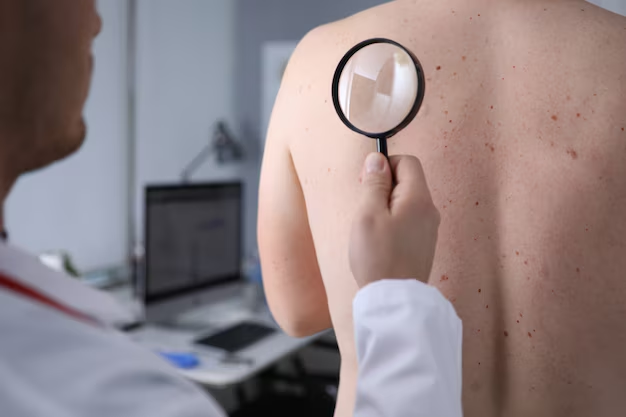Unveiling the Mystery: What Triggers Vitiligo?
Vitiligo is a condition that has captivated both the scientific community and the public for centuries due to its profound impact on the skin's appearance. It affects approximately 1% of the worldwide population, transcending ethnicity and gender. But what exactly causes vitiligo? Let's dive into the intricacies of this unique skin condition and explore the factors that may contribute to its development.
Understanding Vitiligo
Vitiligo manifests as patches of skin losing their pigment, resulting in starkly contrasting white areas. This occurs when melanocytes, the cells responsible for producing melanin, stop functioning or die. Melanin is the pigment that gives skin, hair, and eyes their color. While the exact cause of vitiligo remains elusive, various factors are believed to play significant roles.
Potential Triggers of Vitiligo
Genetics: A Familial Connection
Research suggests a strong genetic component to vitiligo, with about 30% of sufferers reporting a family history of the condition. Several genes have been linked to vitiligo, many of which are involved in immune system regulation. It's not a straightforward inheritance pattern, but having a relative with vitiligo can increase the likelihood of developing it.
Autoimmune Response: The Body vs. Itself
A prevalent theory in the scientific community positions vitiligo as an autoimmune disorder. In autoimmune diseases, the body's immune system mistakenly attacks its own cells. In the case of vitiligo, it targets melanocytes in the skin. Though why the immune system turns on these cells remains uncertain, it may be triggered by factors discussed below.
Environmental Influences: The Role of External Factors
Environmental factors may also play a critical role in the development of vitiligo. These could include:
- Sunburn: Severe sunburn can lead to an argument between the immune system and skin cells, potentially sparking vitiligo.
- Stress: Emotional stress might contribute to the onset or exacerbation of vitiligo as it impacts overall immune function.
- Chemical Exposure: Certain chemicals found in hair dyes, sunblocks, and other products could adversely affect melanocytes.
Oxidative Stress: A Cellular Imbalance
Oxidative stress, defined as an imbalance between free radicals and antioxidants in the body, is another potential contributor. This imbalance can result in cellular damage. Studies suggest that in individuals with vitiligo, melanocytes may be more susceptible to oxidative stress, which in turn could lead to their destruction.
Neural Factors: Nerve-Related Influences
Another interesting theory revolves around neurochemical factors in the skin. Some researchers believe that certain neurochemicals from the nerves might influence or damage melanocytes, contributing to the depigmentation characteristic of vitiligo.
Exploring the Psychological and Social Impact
Coping with Emotional Challenges
Living with vitiligo can be emotionally taxing. The visible nature of the condition often affects self-esteem and emotional well-being. Many individuals experience feelings of self-consciousness and anxiety. Understanding and support from friends, family, and mental health professionals can be crucial for managing these emotions.
Navigating Social Interactions
The social implications of vitiligo should not be underestimated. Misunderstandings and myths surrounding the condition can lead to stigmatization or prejudice. Education and awareness are essential for fostering an inclusive environment for those living with vitiligo.
Seeking Support and Building Community
Joining Support Networks
Connecting with others who understand the challenges of living with vitiligo can be incredibly empowering. Support groups or online communities offer individuals a platform to share experiences, treatment strategies, and emotional support.
Raising Awareness
Organizations and campaigns focused on vitiligo awareness work tirelessly to dispel myths and promote understanding. By participating in awareness initiatives, individuals can help others see beyond the condition and appreciate the full person behind it.
Prevention and Management Insights
Managing Triggers
While vitiligo cannot be completely prevented, understanding and avoiding known triggers can help manage the condition. These might include sun protection strategies to prevent sunburn and stress reduction techniques.
Professional Guidance
Consulting with a dermatologist or healthcare professional who specializes in skin conditions can provide valuable guidance on managing vitiligo. These experts can offer insights into available treatments and lifestyle adjustments that may improve the quality of life for those with the condition.
Promising Research
Ongoing research into the causes and treatments of vitiligo continues to hold promise for the future. Scientists are making strides in understanding the genetic and biological drivers of the condition, which could lead to new therapeutic options.
In Summary: Fine-Tuning Our Understanding of Vitiligo
Though the exact causes of vitiligo remain a complex puzzle, genetics, autoimmune responses, environmental factors, oxidative stress, and neurochemical influences are at the forefront of current research. By fostering understanding and support, we can better cater to the needs of individuals living with vitiligo and work towards improved treatments and awareness.
Quick Recap 🌟
- Genetic Influence: Family history increases risk.
- Autoimmune Factor: Body attacks melanocytes.
- Environmental Triggers: Sunburn, stress, and chemicals may play roles.
- Oxidative Stress: Imbalance damages skin cells.
- Support Systems: Emotional and community support is vital.
- Future Prospects: Ongoing research holds the promise of new treatments.
Understanding vitiligo helps individuals manage the condition better while contributing to broader societal acceptance and support. Raising awareness and addressing misconceptions can pave the way for a world where skin differences are respected and celebrated. 🌈
